The Canning Stock Route, Pamir Highway, and Road of Bones are some of the most highly acclaimed off-road routes in the world, but while traveling in Botswana 20 years ago I met two gents in a Defender 110 who asked, “Do you know about the Rubicon… have you driven it?”
When I shared that I live in California and “The Con” was just two hours from my home, they nearly fell over. Being that I’d grown up nearby, the Rubicon was a natural venue for learning how to navigate technical terrain.
Some say that innocence is bliss, and back in those days (the early 1980s) we innocently leapt in sans big tires, locking differential, ultra-low gears or even power steering. Little did we know our backyard trail would land on the bucket list of nearly every four-wheel-drive enthusiast on the planet.
When I received an invite from friend Jesse Coombs to ride shotgun in his D90, I said, “Sure, sounds awesome.” What I didn’t know was that we would be joined by several dozen members of the Northern California Land Rover Club (NCLR). The cause for this rendezvous was their fifth annual Rovicon Adventure.
Rubicon DNA
While most only know the Rubicon for the trail that passes through it, Native American Washoe and Maidu indians traversed its glacier-formed landscapes for thousands of years before the first outsiders arrived in the 1840s. Within 20 years, brothers George and John Hunsucker had moved in and set up shop along the river.
They constructed guest rooms, stocked the river with trout to attract visitors, and began bottling the spring’s mineral water. Demand quickly outpaced their ability to transport it by mule to resorts in Lake Tahoe, and they convinced El Dorado County to construct a wagon route and declare it a public road. Their efforts, and the trail’s official status, would ensure the Rubicon would remain open for future generations.
In 1888, female entrepreneur Sierra Nevada Philips Clark purchased the land, constructed a 12-room hotel and started stagecoach service to Lake Tahoe. The valley would become known as the Rubicon Mineral Springs Hotel and Resort, and established the area as a go-to tourist destination.
As the automobile swept the nation in the early 1900s, it was only a matter of time before an intrepid adventurer tackled the Rubicon. In 1908, journalist Marion Walcott piloted a Mitchell touring car into the Springs. The hotel passed through several hands before landing with an investor in 1928 and was permanently closed.
In 1985, some of Jeepers Jamboree’s founding fathers pooled their money and acquired the land. This required huge personal investment with little chance to ever make a penny, but they knew their “profit” could only be quantified on the balance sheet of life. Their charter ensured this place they loved would remain available for all to enjoy, and millions of people from around the world have come to experience its splendor.
Soup Bowls & Broken Axles
As the sun crested the Sierra Nevada we departed in three groups, making our way through Gatekeeper (a rookie filter in the first 300 meters) and across Granite Bowl to The Ledges. Looking at a map of the trail one will notice every obstacle has a name. There is Arnold’s Rock, Morris Rock, Walker Hill and numerous others. These monikers honor early Jamboree “rock rollers” that that staffed difficult sections along the route.
Other sections were christened after a specific incident. Soup Bowl received its name after a box containing cans of Campbell’s Soup bounced out and dispersed its payload on the ground. And then there is Cadillac Hill. As you might surmise, this is where an old Cadillac slid off a steep section of trail; bits of its body and frame can still be found if you know where to look.
With today’s technological advancements in suspensions, gears and tires, the Rubicon is no longer rated a 10 in difficulty (moving scale; think rock buggies and King of the Hammers). But as one participant stated after he sheared a rear axle shaft on The Ledges: “The Rubicon is no joke!” Fortunately, he had a spare and the Rover’s full-floating configuration made for a quick repair.
Crossing the million-dollar bridge at Ellis Creek, we turned east toward Walker Hill, passing Soup Bowl and settling in for the night at Winter Camp. Most groups were in before dark, affording time for a dip in Spider Lake, setting up the barbeques and imbibing copious quantities of fine spirits.
Sluice Boxes & Islands
The morning found several members of the group tackling Little Sluice, which received the moniker for its 100-meter gauntlet of boulders wedged between imposing granite walls. Contrary to popular belief, successfully navigating the Rubicon does not require 40-inch tires and 1-ton axles.
While these modifications allow you to set the autopilot and turn off your brain, a skilled driver can do it in a modestly built vehicle. An excellent example was Greg Forbyn driving his 1955 Series I. Sporting 32-inch tires he did drag the underbelly a bit, but witnessing him thread the old girl through The Con’s formidable obstacles was like watching a well-choregraphed ballet.
From the Sluice we cleared Arnold’s Rock and descended Granite Slabs to Buck Island. Buck isn’t an island but a reservoir, and the ideal place to take a mid-day plunge and have lunch. Big Sluice is the last major hurdle before crossing the Rubicon River bridge and finding main camp. Prior to the installation of the current steel I-beam bridge in 1982, vehicles drove across a wobbly old plank affair without railing.
Pulling into the Springs, we envisioned what it looked like when Ms. Clark built her hotel. Taking in the grassy meadow, tall pines and inviting river was like stepping through a time portal. After checking in with the Springs’ caretaker we set up camp, jumped in the river, and settled in for another night in paradise.
This isolated haven (no cell service or comms with the outside world) has served as Jamboree basecamp since 1953, and it now features a concrete dance floor, large kitchen and dining area, Amos’ Bar and two stages. Although the camp was quiet, we imagined a thousand Jamboree folks grilling steaks, tipping coldies at the bar and cutting a rug on the dance floor.
The NCLR boys had their own entertainment planned, which included the annual Rovicon Awards and an impromptu competition swapping out two broken axles on a Discovery. Team Scully (Scully Off-road) took top honors at just under 30 minutes.
Before ascending Cadillac Hill the following morning, we stopped at the cemetery to pay our respects. While most markers are memorials to people who loved the area, some are said to be the final resting place of the Rubicon’s early pioneers and Jamboree organizers—whiskey bottles and broken axles at peace by their sides.
Observation Point overlooks the Rubicon River, across the valley to Buck Island and Desolation Wilderness, and is the perfect spot for lunch and the traditional group photo. I stowed my cameras, talked Jesse out of the driver’s seat, and enjoyed the last few miles to Lake Tahoe behind the wheel of his D90. I should have done this earlier; it was wonderful.
The Wrap
Although I grew up in the area and have driven the Rubicon dozens of times, each brings a new experience, new friends and a renewed appreciation for this Jewel of the Sierras. The NCLR crew was more fun than a rowboat of drunken monkeys to hang out with, and I finally met long-time “virtual” friend Michele Dallorso, who flew in from Italy specifically for Rovicon. As for the two blokes from Botswana, I hope they eventually shipped their Rovers to the U.S. and checked The Con off the bucket list.
![]()
Rubicon Reads
Rick Morris, an archeologist who began visiting the area as a young boy with his family, authored one of the most detailed chronicles on the region, “Rubicon Springs and The Rubicon Trail: a History.”
![]()
NCLR Club
Established in 2007, the Northern California Land Rover Club has more than 150 members from around the globe. In addition to hosting monthly trail rides, annual spring barbecues and the Rovicon run, they volunteer on trail clean-up and maintenance projects with the Rubicon Trail Foundation and California 4Wheel Drive Association. Learn more at: http://www.norcalrovers.org/index.html
![]()
Rubicon Outlook
In the early 2000s, the Rubicon’s future was questionable. Bands of renegade off-roaders claimed it as their personal mosh-pit party spot, leaving trash and human waste everywhere, driving away responsible enthusiasts and creating an environmental hazard. In 2001, concerned user groups reached out to El Dorado County and the California OHV Division for help. These same groups created Friends of the Rubicon (FoR) and the non-profit Rubicon Trail Foundation (RTF). In the past 20 years, FoR and RTF have donated thousands of hours of volunteer time, secured millions of dollars in funding and worked with government agencies on maintenance projects, installing toilets and ensuring law enforcement is present throughout the summer months. Today, the renegades are gone and the Rubicon Trail’s outlook is bright. For more information go to: https://www.rubicontrailfoundation.org/
Access More Great Stories!
This article originally appeared in OVR Issue 06. For more informative articles like this, consider subscribing to OVR Magazine in print or digital versions here. You can also find the print edition of OVR at your local newsstand by using our Magazine Finder.


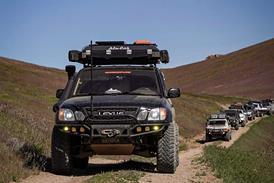

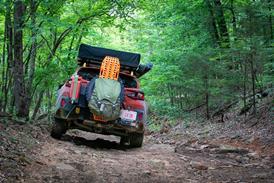
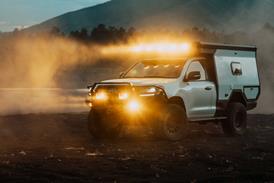
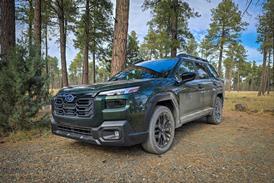
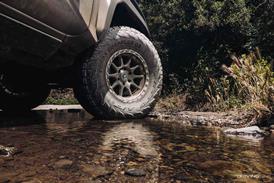
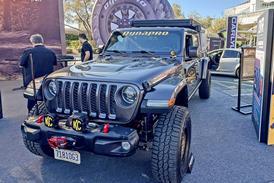
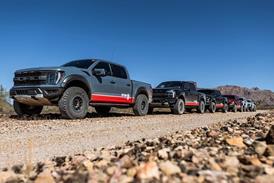

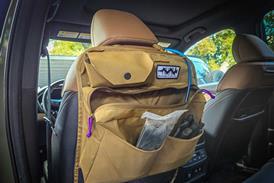

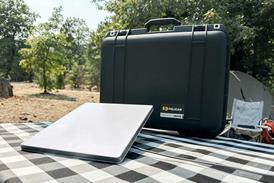






No comments yet